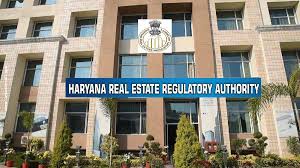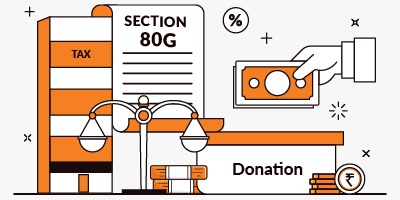B. Siva Sankara Rao, J.@mdashThe injured-claimant filed this appeal, having been aggrieved by the Order/Award of the learned Chairman of the Motor Accidents Claims Tribunal-cum-II Additional Chief Judge, City Civil Court, Hyderabad, (for short, ''Tribunal'') in M.V.O.P. No. 186 of 2001 dated 03.11.2003, awarding compensation of Rs. 93,000/- (Rupees ninety three thousand only) as against the claim of Rs. 2,00,000/- (Rupees two lakhs only), for enhancement of compensation as prayed for in the claim petition u/s 166 of the Motor Vehicle Act, 1988 (for short, ''the Act''). Heard Sri B. Parameshwara Rao, the learned counsel for the appellant. The 2nd respondent-Oriental Insurance Company Limited served was called absent with no representation. Service of notice was dispensed with against the 1st respondent-owner of the crime vehicle. In this regard, in
2. The contentions in the grounds of appeal in nutshell are that the award of the Tribunal is contrary to law, weight of evidence and probabilities of the case, that the Tribunal erred in arriving a wrong conclusion on the quantum of compensation and awarded a very meager amount instead of awarding as claimed and prayed for from nature of the injuries proved sustained, pain and sufferance there from, treatment undergone and amount incurred for the same and hence to allow the appeal by enhancing and awarding full compensation as prayed for.
3. Now the points that arise for consideration in the appeal are:
1. Whether the compensation awarded by the Tribunal is not just and requires interference by this Court while sitting in appeal against the award and if so with what enhancement to arrive a just compensation and with what rate of interest?
2. To what result?
POINT-1:
4. The facts of the case as proved before the Tribunal and not in dispute in this appeal are that, on 15.11.2000 due to the rash and negligent driving of the driver of the crime vehicle (Maruthi Zen bearing No. HR 35 B 0056) belongs to the 1st respondent insured with the 2nd respondent covered by Ex. B.1 policy, same dashed against the Scooter that was being driven by the brother of the Claimant, and the Claimant is its pillion rider by name Rayees Fathima, aged about 20 years, resident of Moti Darvaza, Golkonda, Golkonda Mandal, Hyderabad, claimed working as a teacher ques school with earning of Rs. 2500/- per month and as a result the claimant sustained grievous fractured injury i.e. central pelvis region right hip fracture dislocation (as per Ex. A.3 medical certificate, Ex. A.5 discharge sheet, Ex. A.7 & 10- x-rays and Ex. P.9 disability certificate showing as if 40% disability issued by the private doctor S. Venkataramana, ortho), which occurrence is covered by Ex. A.1 First Information Report in Cr. No. 203 of 2000 u/sec. 338 IPC and Ex. A.2 charge sheet. The Tribunal from the evidence of P.W. 1-claimant with reference to Ex. A.3 medical certificate, Ex. A.5 discharge sheet, Ex. A.7 and 10- x-rays and Ex. P.9 disability certificate (showing as if 40% disability issued by the private doctor S. Venkataramana, ortho) come to the conclusion of P.W. 1 got permanent disability awarded Rs. 93,000/- viz., Rs. 20,000/- for the injuries, Rs. 5000/- for pain and sufferance and extra nourishment and transport, Rs. 3000/- for medical attendant, Rs. 25,000/- for medical bills and Rs. 40,000/- for the disability as against respondent Nos. 1 and 2 jointly and severally.
5. It is the contention of the learned counsel for the claimant in support of the grounds of the appeal that though the permanent disability was taken note of though not specified of 40%, the compensation awarded is unjust, unreasonable and the Tribunal is erred in awarding such a meager amount though it was supposed to award just compensation by applying multiplier method and by taking consideration of the earnings at a minimum of Rs. 3,000/- with increase there from of future earnings.
6. Before coming to decide, what is just compensation in the factual matrix of the case, it is apt to state that perfect compensation is hardly possible and money cannot renew a physique or frame that has been battered and shattered, nor relieve from a pain suffered as stated by Lord Morris. In Ward v. James 1965 (1) All. E.R. 563, it was observed by Lord Denning that award of damages in personal injury cases is basically a conventional figure derived from experience and from awards in comparable cases. Thus, in a case involving loss of limb or its permanent inability or impairment, it is difficult to say with precise certainty as to what composition would be adequate to sufferer. The reason is that the loss of a human limb or its permanent impairment cannot be measured or converted in terms of money. The object is to mitigate hardship that has been caused to the victim or his or her legal representatives due to sudden demise. Compensation awarded should not be inadequate and neither be unreasonable, excessive nor deficient. There can be no exact uniform rule in measuring the value of human life or limb or sufferance and the measure of damage cannot be arrived at, by precise mathematical calculation, but amount recoverable depends on facts and circumstances of each case. Upjohn LJ in Charle red House Credit v. Tolly 1963 (2) All. E.R. 432 remarked that the assessment of damages has never been an exact science and it is essentially practical. Lord Morris in Parry v. Cleaver 1969 (1) All. E.R. 555 observed that to compensate in money for pain and for physical consequences is invariably difficult without some guess work but no other process can be devised than that of making a monitory assessment though it is impossible to equate the money with the human sufferings or personal deprivations. The Apex Court in
7. From the above legal position, coming to the factual matrix, as the fracture sustained by P.W. 1 is not proved by examination of the said doctor who issued Ex. P.9 certificate showing as if there is 40% disability of permanent nature caused there from, it can be taken as not proved and also from the fact that there was no finding of the Tribunal of the disability is 40% but for to say there is a permanent disability in taken note of by the Tribunal. Thus the appeal claim is limited to the extent not correctly taken the percentage of disability and the multiplicand and multiplier that to be applied. This Court from Ex. A.3 medical certificate, Ex. A.5 discharge sheet, Ex. A.7 & 10- x-rays and Ex. P.9 disability certificate taken by overall consideration of the same with reference to P.W. 1 evidence and even from her saying she is working as computer operator at one breath and as teacher at other breath and charge sheet also show that she is computer operator and thereby there is no loss of avocation or earnings with prospects, come to the conclusion of the permanent disability is only 10% and that the income of the claimant as deposed is taken at Rs. 2,500/- p.m., with 50% increase thereon of future prospects comes to Rs. 3,750/- p.m. and for 10% it comes to Rs. 375/- by adopting multiplier 18 as laid down in the latest expression of the Apex Court in
8. Having regard to the above, the just compensation which the claimant is entitled comes to Rs. 375 x 12 = Rs. 4,500 x 18 = Rs. 81,000/- and for pain and sufferance Rs. 10,000/, loss of earnings during treatment, attendant and transport charges Rs. 7,000/and for medical expenses and treatment of Rs. 7,000/- = Rs. 1,05,000/- to award. The interest at 9% per annum awarded by the Tribunal even not in dispute, from the settled proposition of law in POINT -2:

